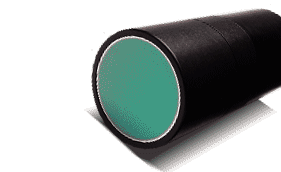|

The EVS-1000 is the world's smallest and lightest Enhanced Vision System. It enables pilots to "see through" conditions of poor visiblity such as haze, smoke, snow, rain, and the darkness of night, all of which reduce a pilots ability to see the outside environment.
- suitable for even the smallest business jet or helicopter
- flexible installation options: nose- or tail-mounted
- easy to install on all aircraft
- maintainable
|
 |
 |
|
The Max-Viz EVS-1000 system uses uncooled, long-wave infrared sensors to gather data about runways, terrain and any potential obstacles on the ground or in flight. These images are enhanced, relayed and displayed on any video-capable display system in the cockpit.
| EVS-1000 Specifications |
| Sensor Technology |
Uncooled solid state. Does not require mechanical cryogenic cooler |
| Size |
Sensor head: 2.8" (71mm) diameter x 6.8" (172.7mm) L; Power module: 3.75" (95.3mm) W x 5.0" (127mm) H x 2.5" (57.2mm) D |
| Weight |
Sensor head* - 2.5 lbs. (1.13kg); Power module* - 2.5 lbs. (1.13kg) *Does not include cable and brackets |
| Power |
Electronics - 10 watts typical; 25 watts peak at 28 VDC
Environmental - 50 watts average; 125 watts maximum (with heater) |
| Field of View (FOV) |
Head-Down Display (HDD): 53° x 40 typical; special FOVs on request |
| Resolution |
320 x 240 pixels; two-dimensional Staring Array |
| Reliability |
15,000+ hours MTBF |
| Operating Temp |
-55° to +70° C |
| Installation Options |
Mounted on nose, belly or tail |
Environmental
Qualifications |
Unit tested to requirements of DO-160D
Fully EMI/RFI protected and power conditioned |
View the EVS-1000 Video Library.
What is EVS?
|
|












